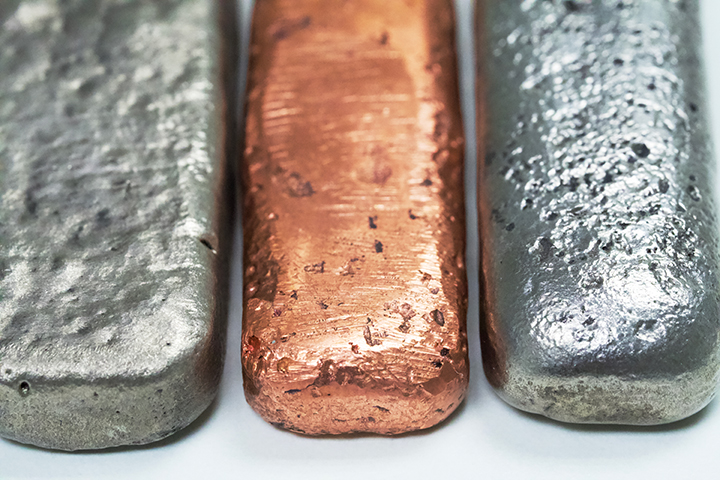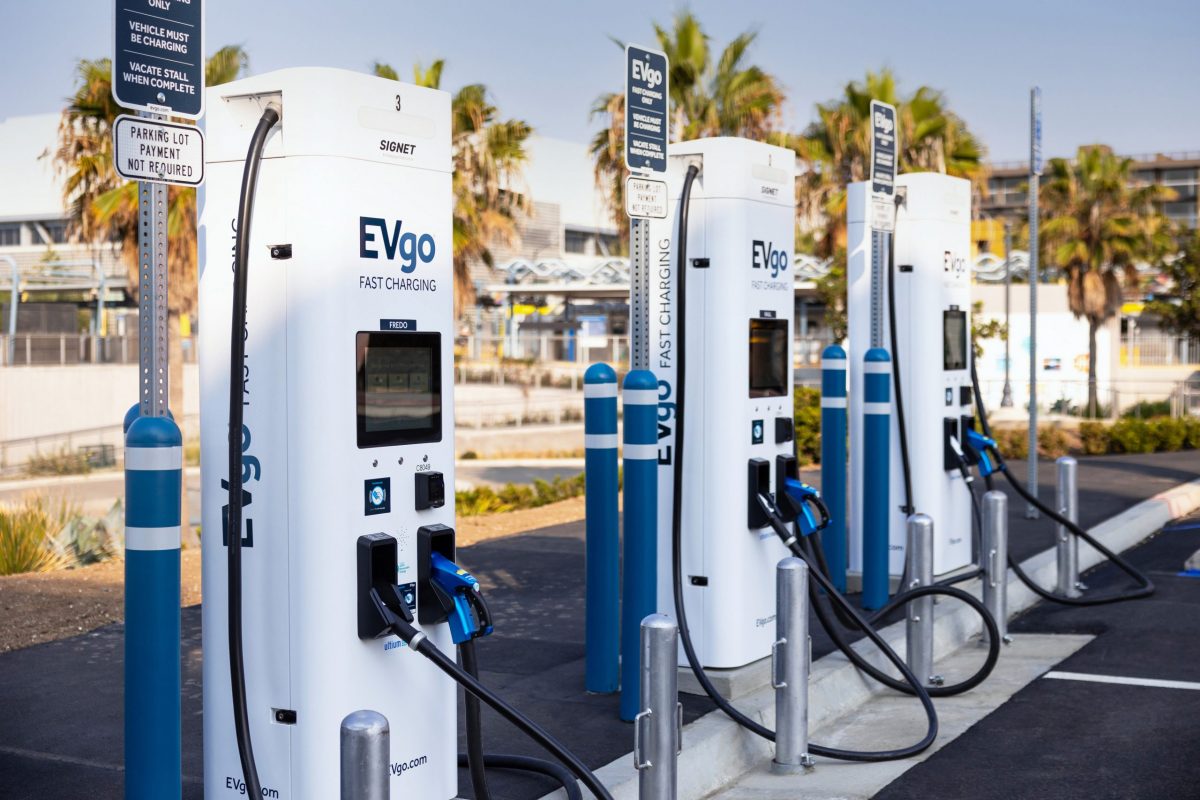The global lithium-ion battery (LiB) recycling market will increase from US$41bn in 2021 to US$116.6bn by 2030, according to data analysts ReportLinker, with electric vehicles (EVs) being a key growth driver. In the same period, LiB waste produced by EVs will rise to 11 million metric tons, according to the World Economic Forum, a dramatic rise from the 600,000 metric tons forecast for 2025.
An International Energy Agency report on clean energy minerals recently concluded that recycled quantities of copper, lithium, nickel, and cobalt from spent batteries could reduce combined primary supply requirements for these minerals by around 10% by 2040.
LiB recycling policies are further along in the EU than in the US. The EU has a litany of requirements for the reuse and recycling of battery materials, which require manufacturers to design batteries for easy recycling and mandate that new batteries include a minimum amount of recycled content. In addition, by 2027, battery and vehicle manufacturers will be expected to provide easily accessible information on the recycled quantities and sources of cobalt, lithium, nickel, and lead in every battery sold.
With all these incoming regulations in mind, US-based Aqua Metals is developing what it claims to be the cleanest and most cost-efficient LiB recycling solution to date. The company says it can recover a higher percentage of the metals at a higher quality with a lower operating cost than the current methods being applied or developed in the industry without the damaging effects of furnaces and greenhouse emissions.
Aqua Metals
The Aqua Metals Innovation Center located in the US state of Nevada is the company’s R&D hub. In November 2022, the facility’s pilot plant, powered entirely by renewable energy, is expected to recycle between six to ten tons of recycled black mass per month, scaling to approximately 70 tons in 2023. “We expect to be the first company that will produce high purity metals and battery grade lithium hydroxide from spent LiBs and retain them within the US,” says Aqua Metals Chief Executive Steve Cotton.
“We are riding the tipping point in EV adoption,” says Cotton, pointing to the recent California Air Resources Board ruling that all new cars sold in California will be zero-emissions from 2035. “This likely means predominantly lithium-ion powered. Massachusetts has already declared its intent to follow California’s lead. Considering that at least 15 states have previously adopted California’s vehicle standards on clean-car rules, it is likely more states will follow,” he adds.

High purity nickel, copper, and cobalt made from bench scale testing at the Aqua Metals Innovation Center
Indeed, New York has begun implementing a 2035 ban, following the lead of California regulators. As a result, for the 2026 model year, zero-emission models must account for at least 35% of an automaker’s new vehicle sales in the state, rising to 68% by 2030, and 100% by 2035.
Aqua Metals’ data reveals that demand for LiB materials in the next decade could increase by over 575% for lithium and 1,237% for nickel. As a result, potential metal shortages make LiB recycling a necessity.
“Global copper demand will likely be around 60 million tons by 2050, setting the stage for a major deficit. In addition, with 28% demand growth for lithium between 2020 and 2030, lithium is expected to have a 13% deficit in 2030, cobalt an estimated 32% shortage, and nickel 22%, though with a boost of 40% during the current decade,” says Aqua Metals Vice President, David Regan.
Additionally, he notes that countries outside the US, often in higher areas of geopolitical tensions, produce 99% of raw and component materials for LiBs, which can lead to higher prices and shortages.
A necessity
Aqua Metals forecasts 15 million metric tons of spent LIBs by 2030. Currently, only 5% of LiBs are recycled; the rest go to landfill. “We expect that percentage to increase significantly over the coming five to ten years,” says Regan.
The pending volume of spent LiBs entering the market in the next decade makes it vital to build a cost-effective, scalable recycling infrastructure that is environmentally sustainable from inception. Unfortunately, popularly touted LiB recycling options create an environmental burden that Regan notes the world can’t take on. “It makes no sense to recycle LiBs using a process that produces high carbon and particulate emissions, toxic wastewater, slag and chemical waste streams,” he says
It is vital right now to build a cost-effective, scalable recycling infrastructure that is environmentally sustainable from inception
Furthermore, LiB recycling plants are costly to build and operate, highlights Cotton. Advanced minerals project manager NeoMetals estimates operating costs of US$1,560 per tonne of batteries processed.
Similarly, sophisticated equipment is required to treat harmful emissions from the smelting process. The pyro process (smelting) is currently the primary solution for recycling LiBs, but this high-heat solution is environmentally unsustainable, says Cotton.
Heat ranging from 800 to 1,000 degrees Celsius is required to synthesise the materials needed for production. However, the only cost-effective method of reaching these temperatures involves burning fossil fuels, which adds to CO2 emissions.
The amount of CO2 emitted during the long battery manufacturing process depends on which materials are used and how they are sourced. Currently, China manufactures around 77% of the world’s supply of lithium-ion batteries using coal as the primary energy source. However, according to a July 2022 study by MIT, coal emits roughly twice the amount of greenhouse gases as natural gas, making the latter a much more sustainable solution for high-heat manufacturing.
Li AquaRefining
Aqua Metals has produced a more efficient and carbon-saving solution to address these environmental issues: Li AquaRefining. This process employs an electroplating method that builds metal one atom at a time, generating very high-purity products by utilising electricity as a reagent instead of chemicals or high heat.
In addition to creating far greater carbon, the conventional pyro-smelting process is inefficient as alloys of cobalt, nickel, and other metals will still require further processing. Similarly, the standard hydro process (precipitation) produces lithium carbonate, but cobalt, nickel and manganese sulphates require further processing.
Comparatively, AquaRefining recovers a higher percentage of metals with higher quality; cobalt, nickel and copper are produced in pure metal form alongside manganese dioxide and lithium hydroxide.

Where smelting requires high heat, AquaRefining operates at room temperature: “There is no loading up with chemicals at the start of the day, no disposal of those chemicals at the end of the day, and no furnace releasing pollutants and carbon emissions into the atmosphere,” notes Regan.
By reducing chemical throughput, emissions, and energy intensity, the closed-loop AquaRefining process aligns with the full potential of a circular clean energy economy. According to Aqua Metals, the method provides a 95% reduction in chemical waste streams compared to standard hydroprocessing and a 99% carbon reduction versus smelting.
The vitality of right now
Taking these innovations to the next level, Aqua Metals has been awarded 68 patents, with 49 pending. “These patents are mainly for our first-in-class clean lead acid battery recycling,” explains Regan. The company also holds two lithium technology patents and expects to achieve more soon.
“We are very proud that we are the only LiB recycler aligned with the US Department of Energy,” says Cotton. “We are entirely committed to being net-zero, and we accomplish this by powering 100% of our operations and recycling process with renewable energy.”
The Chief Executive states this is achievable because Aqua Metals is the only company using renewable electrons as the reagent. “If LiB technology is the backbone of the ongoing energy and EV transition, how we source and recycle the minerals used to make the batteries is fundamental for sustainable success,” concludes Cotton.
“This is not just a future challenge; there is already a large and rapidly growing supply of LiBs. So, it is vital right now to build a cost-effective, scalable recycling infrastructure that is environmentally sustainable from inception.”



